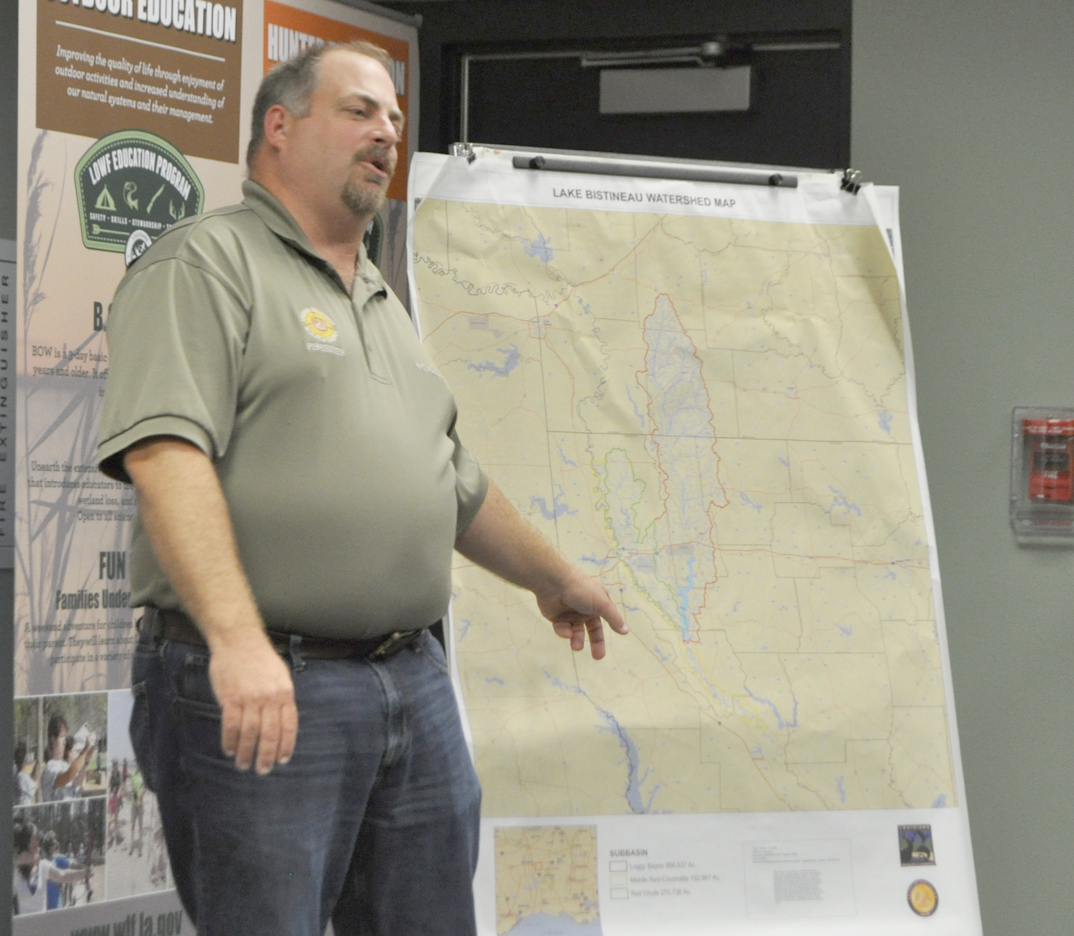440
Lake Bistineau has come down five feet since the drawdown began Aug. 15, and officials say it needs to drop another two feet.
Louisiana Department of Wildlife and Fisheries Biologist Manager Jeff Sibley says they have treated more than 900 acres o

Louisiana Wildlife and Fisheries Biologist Manager Jeff Sibley talks about the massive watershed that is Lake Bistineau. During a meeting Monday, he says since the drawdown began on Aug. 15, the lake has dropped approximately five feet. Michelle Bates/Press-Herald
The fight against the salvinia invasion on Lake Bistineau continues
previous post


